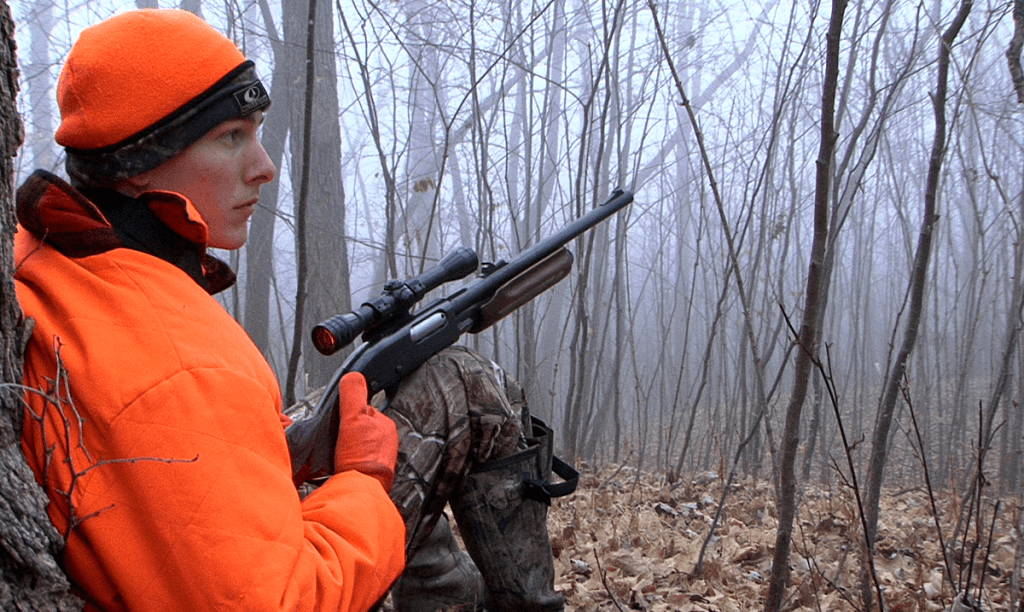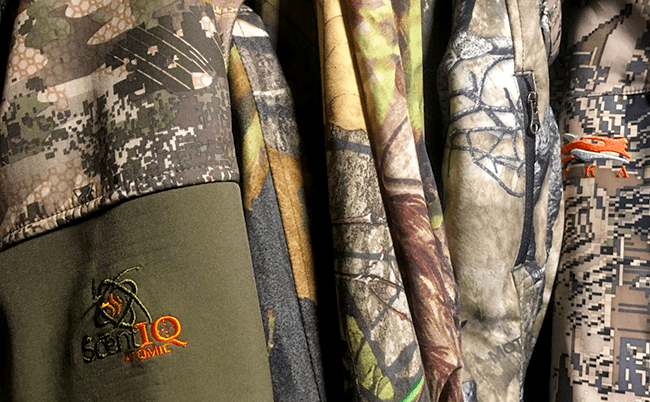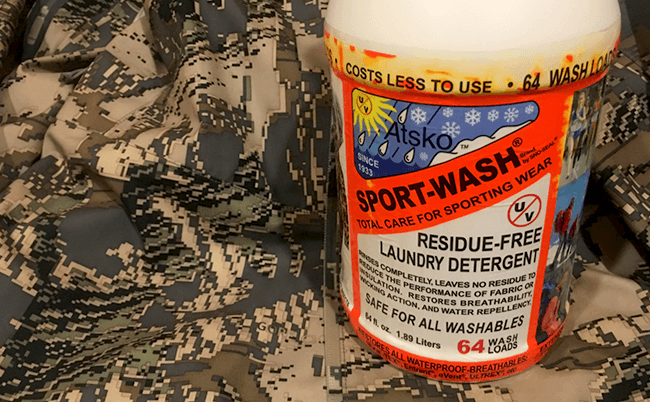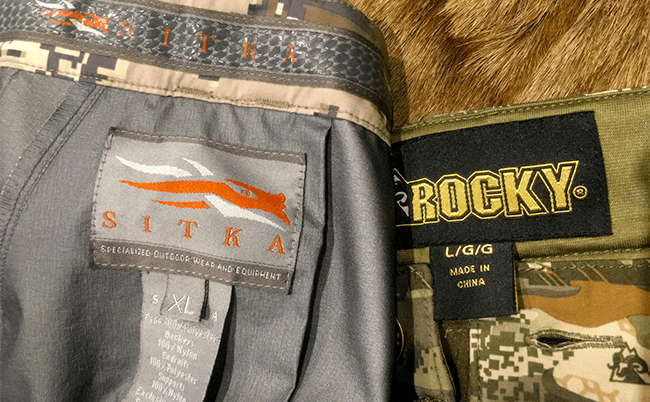
Staying Warm and Dry in the Great Outdoors
There’s much merit to today’s clothing designed for outdoor recreation in cold temps and under dripping skies. Take care of both the clothing and the body underneath, and those days that have others hugging the fireplace at home will feel like a spring walk in the park to you.
By Peter B. Mathiesen
Staying warm and dry is about as basic as it gets. Everyone understands, if you get cold and damp, you lose focus and you’ll probably head to the sanctuary of the truck.
What makes us cold isn’t that we use bad equipment. It’s that we use our garments poorly and care for them less than efficiently. Today’s gear has never been better and lighter. And while much of today’s technical clothing for outdoorsmen and -women can come with a hefty price tag, there’s lots available in the cheap seats. Either way, you can make your investment last — and stay warm and dry every time you go afield — if you take a little care.
Keeping Dry: Myth-Busting
Remember how well your Gore-Tex jacket worked the first season you used it? Now, after a few trips to the washing machine or a year later, the jacket’s outer layer has stopped repelling water.
Breathable membranes have been around for decades, yet vast confusion still surrounds the proper care of these garments. I’ve heard the following:
- “I never wash the jacket, it will ruin it.”
- “I only put it in the dryer as a last resort.”
- “Woolite is the best way to clean a garment.”
The list of how and how not to care for your outdoor clothing is long — and usually incorrect. Even garment manufacturers may not be helpful or knowledgeable when it comes to keeping functional the features for which you bought the garment in the first place.

Most hunters’ closets are filled with hi-tech clothing that’s begging to be used properly.
Most breathable garments come in two forms, a water-resistant outer layer with a DWR (durable water repellant), usually the least expensive, or a laminated, waterproof breathable garment with a DWR layer and a breathable membrane like Gore-Tex inside, more expensive.
To work properly, your jacket or pant must be free of fine dirt and mud for the DWR to bead water. This allows the water to run off and gives the garment the ability to breathe. If the exterior absorbs moisture it may not leak, but now you’re wearing a garment that may feel more like a plastic bag.
This Works — Really
To improve your garment’s performance, all you need to do is toss it into the washing machine. The trick is to use the right detergent and finish it in the dryer.
The wrong detergent will render the DWR on the verge of useless. Don’t use Tide, Eco Wash, and especially not Woolite. My choice, after using everything from Nikwax to European sport soaps, is Sport Wash or Sport Wash Zero. It’s inexpensive and will do a remarkable job of bringing your garment back to life.

Keeping your clothing clean with the right detergent, like Sport Wash, will vastly improve your garments’ ability to keep you dry and warm.
Follow the instructions. Set the washer on extra rinse. And, yes, toss it in the dryer on the hottest cycle to finish. The dryer will actually reactivate the DRW. In 90 percent of the garments I’ve tested, the jacket or pant will work like new. The only disadvantage to a product like Sport Wash is it has no brighteners.
One last note: If you don’t have the right detergent, it’s better to use none at all and double the rinse cycle.
If your DWR is truly worn from years of wear, you can attempt to bring your beloved garment back from the dead with Permanent Water Guard. It comes in a 17-ounce spray bottle, and you’ll apply it when the garment is wet and clean immediately after taking it out the washer. Apply a liberal amount of Water Guard on the clothing until it’s saturated and running off. This should be done outside. Then, toss it in the dryer with high heat. You’ll be impressed at just how waterproof your garment will become.
Love your down feather garments but not sure what to do with them? Whether it’s waterproof or regular down, you’ll find the same benefits from cleaning with Sport Wash. If there’s worn DRW on the outside of the jacket, Permanent Water Guard will work just as effectively as it does on more “technical” garments.
Fending Off the Chills: Physiology
Let’s start with your body. Your health is a factor in your ability to stay warm. If you sweat heavily, are overweight, a diabetic or have poor blood circulation, these factors should be considered when you’re out in the woods or the marsh.
Time is also a factor. It’s relatively easy to stay warm for an hour or two. Once you pass two hours, the challenges increase dramatically. Trade up from three to four hours, and you have arrived at a completely different outdoor experience than the one you started with.
Older individuals, children and petite women also face challenges a 180-pound, 35-year-old, six-foot man with years of cold weather exposure doesn’t. If your body isn’t used to the cold, you may need far more insulation.
Perspiration is the constant culprit in producing bone-chilling cold. You must seriously manage it to stay warm. To get a handle on sweat, cool down your body when you’re active and choose the right undergarments. If you’re looking at a long drive to your hunting destination, dress lightly in your base layer or fleece in the truck and, if possible, don’t wear your insulated boots. Set the heat on low and get your passengers on the same page. The goal is to arrive with dry skin and dry clothes.
If you’re looking at a long walk or wade to the blind or a stand, wear as little as possible on the trek. If you start to sweat, slow down, take off your hat, and remove a layer of clothing. When you get settled in, use a hand towel to dry off your skin. When you’re dry, your base layer will work more efficiently because it has far less perspiration to displace.
Fit Makes a Huge Difference
Here’s where so many hunters make the dangerous cross over into cold country. If you’re wearing anything you have to struggle to put on, it’s simply going to make you cold. Any garment that’s tight will restrict blood flow. If you have gained a few pounds since you purchased your last pair of pants or jacket, then you’re probably going to get cold. Your clothing should hang slightly, meaning that if you fill out the cut of the garment out, it’s most likely too snug.

Two pairs of pants in different sizes that fit the same. Know your fit and wear your garments loosely to stay warm.
There’s another problem with too-tight clothing: The goal of insulated clothing is to trap air, so if the insulation is squashed, it can’t perform as designed. An example is wearing two pairs of heavy socks. If you have to struggle to get your boots on, then the insulation created by the loft in the sock is compressed. Yes, you have more insulation. But it’s so smashed together, it can no longer trap air. Combined with the inability to dry out the moisture, you have a formula that will send you back to the truck more quickly than if you wore just one pair of socks.
This analogy translates to waders, jackets, pants and even fleece. If you’re squishing and compressing your layers of clothing together, then you will be colder more quickly than if you didn’t. That means if you used to be a large and now you’re an extra-large, size up. Walk a little slower to your stand and keep those breathable garments clean. By making a few small changes in your outdoor routine you’ll stay warm and dry this season.
In this video, Conn. Hunter Education Instructor Dieter Bromkamp explains the importance of having and maintaining a solid scent control regimen and offers many tips that you can implement before your next hunt.
















